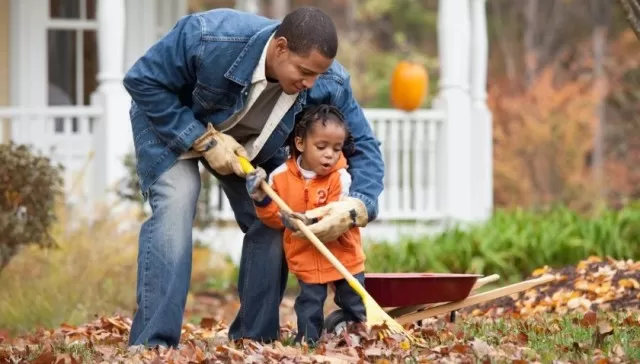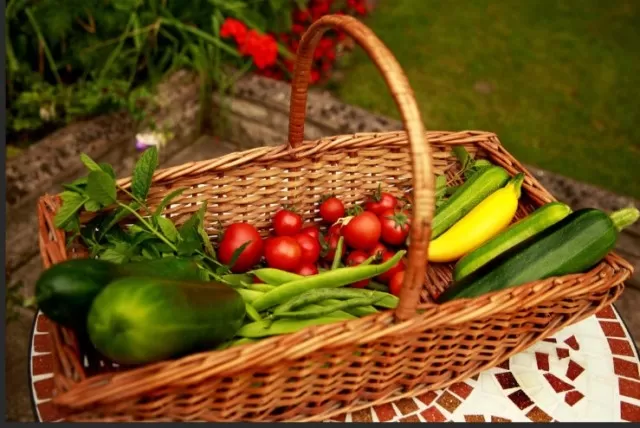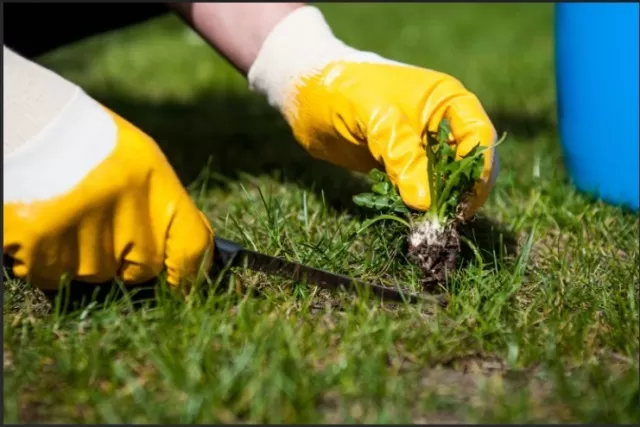Pre-Frost Yard Tasks to Tackle Now.As the warmth of summer bids us farewell and the brisk embrace of autumn draws near, it’s time to shift our focus to the changing landscape. With cooler temperatures on the horizon and the vibrant hues of autumn leaves ready to make their grand entrance, now is the moment to take action. Elevate these temperature-sensitive yard chores to the forefront of your to-do list this month to ensure the lasting splendor of your property throughout this year and the next.
Embracing the evolving seasons means recognizing the unique demands each one brings. As the air becomes crisper and the days grow shorter, certain tasks demand immediate attention. By placing these seasonal responsibilities at the top of your priorities, you’re setting the stage for a thriving and well-maintained property.
From clearing fallen leaves to preparing your plants for the cooler months, these tasks will not only enhance the present appearance of your outdoor space but also lay the foundation for a bountiful year to come. By dedicating your efforts to these crucial yard chores now, you’re investing in the longevity of your landscape’s health and beauty.
Completing Your Essential Autumn Yard Tasks for a Smooth Transition into Winter.

As the air turns brisk and the leaves begin to display their vibrant hues, the arrival of fall heralds a significant shift in the natural world—a shift that prompts us to address the imminent conclusion of the growing season in most regions.
If your locality is prone to frost, this season beckons you to embark on a series of essential gardening tasks, all of which serve as a proactive defense against the impending snow and frost that could disrupt both your plans and the well-being of your cherished plants. It’s worth noting that the timing of the first frost varies across different growing zones, underscoring the urgency of engaging in these outdoor activities over the upcoming weekend.
By dedicating time to these time-sensitive endeavors, you not only shield your frost-sensitive plants and gardening tools from harm but also ensure a seamless transition as you bid farewell to autumn and prepare your outdoor space for the winter months ahead.
Caring for Container Plants as Autumn\’s Chill Sets In.
As the warmth of summer gives way to the brisk embrace of fall, it’s important to consider the fate of your container plants that have flourished on your porch or patio.
The impending cold days can be harsh, and many of these plants might not weather the season well if left outdoors. In order to ensure their survival and thriving, some timely steps are in order.
Begin by assessing your collection of perennials, those steadfast plants that bring joy year after year.
Before ushering them indoors, it’s wise to conduct a thorough inspection to ensure they are free from any lurking pests or diseases. Vigilance at this stage can prevent potential harm to both the indoor environment and your beloved houseplants.
Once you’ve verified their health, the migration of your perennials indoors is the next prudent move.
Find a suitable spot where they can bask in the sunlight they require. Positioning them near a window or directly across from it ensures they receive the adequate light they need to thrive throughout the colder months.
Yet, not all plants demand the same level of attention as the days grow shorter.
Some enter a dormant phase during winter, a period of rest before the regenerative burst of spring. For these plants, a cozy corner in your garage or basement can serve as a protective haven until the growing season reawakens their vitality.
Certain container plants are hardy enough to brave the chill outdoors, but a note of caution is essential.
When opting for this approach, ensure that the chosen plants can endure colder conditions compared to the ground they’re planted in. Containers are more susceptible to temperature fluctuations, so it’s wise to select plants that are rated as cold hardy to a zone lower than your own.
When uncertainty lingers, the guiding principle remains clear: prioritize the well-being of your plants.
When in doubt about their capacity to endure the cold, the safest course of action is to welcome them indoors. By taking these thoughtful measures, you not only safeguard your container plants but also lay the groundwork for a flourishing garden as spring’s warmth returns.
Tidying Up the Summer Vegetable Garden as Autumn Beckons.

As the curtain falls on the vibrant display of your summer vegetable garden, it’s tempting to consider your farming efforts concluded for the year.
However, there’s an important postscript to attend to before you bid your garden farewell. Even if all that remains are desiccated tomato stalks and withered bean vines, the role you play in maintaining your backyard paradise isn’t yet complete.
.
The remnants of your once-thriving garden hold a crucial significance, as they have the potential to influence the success of your future harvests.
While these skeletal structures might appear innocuous, they can become unwitting hosts to various garden pests that could prove detrimental to your forthcoming crops. To safeguard the prospects of a bountiful yield next year, it’s imperative to take action.
Picture this as a final act of seasonal stewardship: gently clearing away the remnants of your summer garden.
By removing these spent remnants, you eliminate potential hiding places and breeding grounds for pests. But the story doesn’t end here.
When considering what to do with these remnants, there are two paths to consider.
If the detritus is free from disease and pest infestations, you have the eco-friendly option of composting.
This route transforms the remnants into nutrient-rich compost that can nourish your soil for the seasons to come. It’s a cycle of renewal that aligns with the ethos of sustainable gardening.
However, if the remnants are plagued by disease or infestation, it’s wiser to bid them adieu through the trash.
This prevents the spread of maladies and potential pests, safeguarding the overall health of your garden ecosystem.
So, as you contemplate the remnants of your summer vegetable garden, recognize that this final chore is a crucial investment in the future fertility and prosperity of your garden.
By responsibly managing the remains, you pave the way for a new cycle of growth, ensuring that your garden’s story is one of continuous renewal and abundance.
Embrace the Promise of New Growth: Planting Trees and Shrubs in Early Fall.
As the warmth of summer fades into the horizon and the anticipation of winter lingers on the horizon, early fall emerges as a golden opportunity to embark on a transformative gardening journey—planting new trees and shrubs.
The timing couldn’t be more impeccable, as this window allows these nascent additions to your landscape to establish their roots before the frosty grip of winter descends.
Imagine this as a strategic introduction to your garden’s future.
By planting during the early fall, you provide your new botanical companions a period of respite from the sweltering summer heat while still offering ample time to put down roots before the ground becomes rigid with frost. This calculated approach grants them the ideal conditions to flourish and adapt, setting the stage for a vibrant spring awakening.
Once you’ve carefully selected your trees and shrubs, the process of ensuring their prosperous future begins.
Nestle them into the ground with care, considering the ideal location, sunlight, and soil composition. And then, like a guardian, tuck them in with a blanket of mulch—a layer of wood chips or other organic materials that safeguard their roots from extremes in temperature and moisture loss.
This gesture not only provides insulation but also nurtures a fertile environment that encourages their growth.
Yet, in your nurturing efforts, remember that fall rains may not always be sufficient to quench their thirst.
Complement nature’s contributions with your own, supplementing the moisture they receive from the skies with well-timed watering. This hands-on care ensures that they receive the hydration needed to thrive during these crucial formative months.
Every garden is unique, shaped by its geographical location and climate.
Therefore, it’s wise to consult local sources and experts for insights into the ideal planting time and the average date of the first frost in your area. Armed with this knowledge, you can confidently embark on this transformative journey, setting the stage for a thriving, well-established landscape that will grace your outdoor haven for years to come.
Reclaiming Garden Glory: Banishing Weeds from Your Landscape.

As the season’s transformation ushers in a time of rejuvenation and preparation, your garden beckons for a thoughtful touch to reclaim its splendor.
Amidst this process, one crucial step stands out—bid farewell to those persistent intruders, the weeds. Whether they’ve taken residence in your vegetable garden or nestled within your flower beds, it’s time to assert your garden’s sovereignty once more.
Autumn unveils a unique advantage for combating these unwelcome guests.
The very nature of this season renders weeds vulnerable to the effects of herbicides, particularly those that have proven elusive in the past. This opportune moment must not be squandered.
Roll up your sleeves and pull those remaining weeds from the soil, clearing the canvas for renewal.
In your arsenal of weed warfare, post-emergent herbicides take center stage.
These specialized formulas target the weeds that have dared to sprout, dealing a decisive blow to their existence. A well-timed application during this season can yield more effective results, given the weakened state of these intruders.
Yet, your crusade against weeds doesn’t stop there.
Enter the pre-emergent herbicide, a silent guardian that prevents the germination of weed seeds. By introducing this defender to your Garden Bed, you thwart the very genesis of future weed populations, setting the stage for a less tumultuous springtime.
Imagine the satisfaction of witnessing your garden emerge from winter’s grasp, the once-overrun landscape now transformed into a haven of health and beauty.
By addressing the weed issue now, you’re investing in a vibrant future. The groundwork you lay in these months not only reclaims your garden’s potential but also ushers in a cycle of renewal that will unfold with each passing season.
Your diligent efforts stand as a testament to the harmony you seek to establish between your outdoor sanctuary and the natural world.
*The information is for reference only.